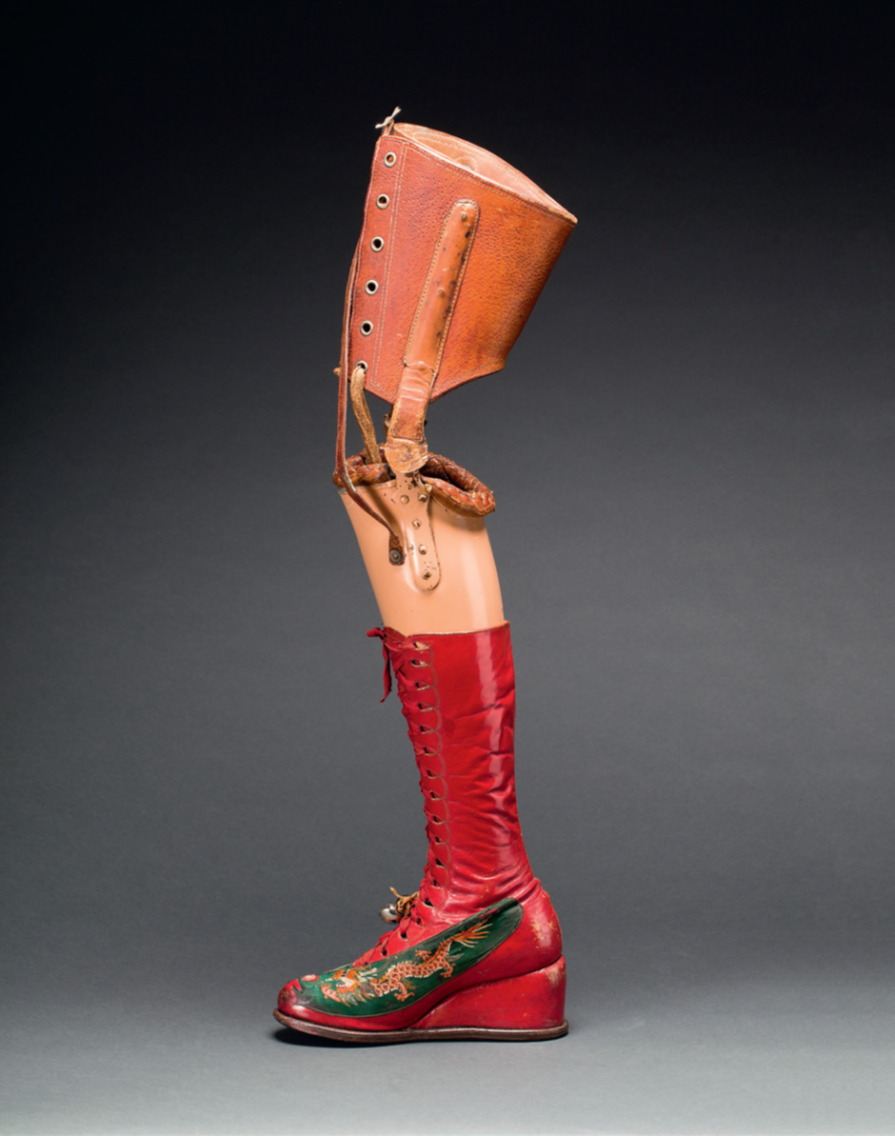Frida Kahlo is Mexico’s most prominent artist known for her legendary self-portraits, along with her iconic unibrow and portrayal of Mexican culture. A piece of artwork that isn't discussed enough, however, is Kahlo’s prosthetic leg. Within the last year of her life, she tragically had to amputate her leg, so she wore a prosthetic leg underneath a red boot. The red boot worn over her prosthetic leg became her new personal canvas because she painted vibrant colors over it. Kahlo found herself in a midlife crisis. She felt she had to reconstruct her self-identity since she was limited in what she could physically do. The irony is she didn’t have to reassemble her self-identity. Like her self-portraits, the paint on her red boots conveyed an honest and vulnerable voice of her mishap.
Kahlo is no stranger to physical pain. She had spent the majority of her life medically ill and physically disabled. For instance, when she was a child, she had contracted polio. Although she survived, her right leg had grown shorter than her left leg. Then, when she was a young woman, she was involved in a horrific bus accident where an iron handrail impaled her through her pelvis. The accident left her crippled and unable to have children. If those early experiences weren’t disastrous enough, Kahlo became diagnosed with gangrene within the last year of her life, forcing her to have her right leg amputated. To Kahlo, this was a reminder of her declining health and she fell into a deep depression.


Kahlo expressed her pain in a letter to her husband, Diego Rivera, writing, “I told you I’ve counted myself as incomplete for a long time, but why the fuck does everybody else needs to know about it, too? Now my fragmentation will be obvious for everyone to see, for you to see…”
In addition, a painting was found inside her journal indicating her depression. The painting focused on her feet which are called milagros. Milagros means “miracle” in Spanish and they are attached to altars, shrines, and sacred objects found in places of worship. Writer Kate Donohue claims, “This painting is a complete thoughtful piece. She depicts her greatest fear, the loss of feet and thus her independence.” Kahlo is being honest about her agony and situation within her painting. Kahlo, being a headstrong and vivacious woman for her time, couldn’t accept the fact she had to sacrifice her right leg and independence. Donohue elaborates on how Kahlo's depression led her to use drugs and drink heavily. In response to her hopelessness, Kahlo spent most of her time confined in her bedroom connecting her art to Mexican culture.

Her artistic creativity led her to craft a red boot for her prosthetic leg. According to writer Roos Van der Tol “To hide her disability, Kahlo designed a lace-up red boot to fit her prosthetic leg.” Kahlo further covered up her disability by painting over the boot. She went on to decorate it “in a beautiful red and green painted design to fit in with her vivid and colorful outfits.” Through green and red paint, she painted a Chinese design on the foot of the leg. Kahlo was known for wearing flamboyant and colorful Tehuana skirts celebrating Mexican culture. So, her prosthetic leg became an extension of her Mexican heritage.
Today Kahlo's prosthetic leg is on display at the Casa Azul, which is also known as Museo Frida Kahlo, in Mexico City. After her death in 1954, “her leg was sealed away in a volt with some of her other belongings.” Interestingly, it wasn’t until 2004 that art historians started collecting artifacts for the Casa Azul. According to Van der Tol, the prosthetic leg made its first appearance in 2012. It was showcased along with Kahlo’s clothes and other prosthetics which “provided an introduction to Kahlo’s life.” Although the leg was part of the end of Kahlo’s life, she didn’t allow her disability to define her. Her legacy lives on after death for many reasons, one being that she was honest and vulnerable within her artwork about her condition.
©ArtRKL™️ LLC 2021-2023. All rights reserved. This material may not be published, broadcast, rewritten or redistributed. ArtRKL™️ and its underscore design indicate trademarks of ArtRKL™️ LLC and its subsidiaries.





